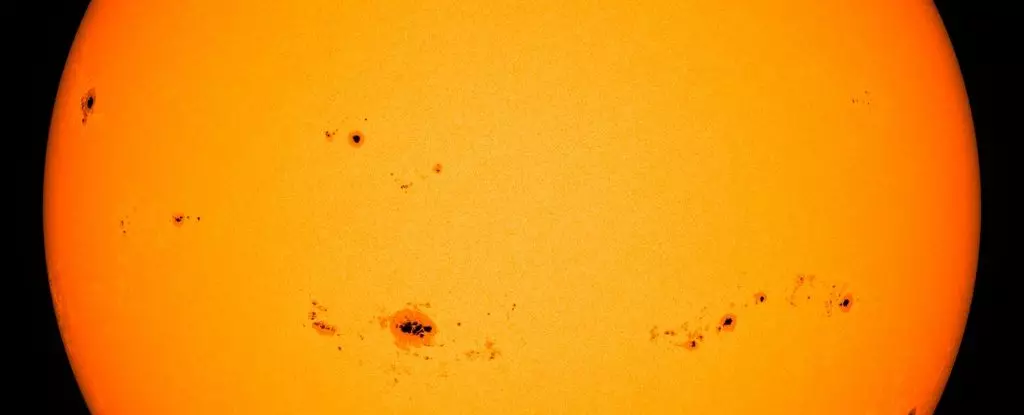Recent announcements from NASA, the NOAA, and the Solar Cycle Prediction Panel have confirmed that we are currently experiencing solar maximum, a peak in the Sun’s approximately 11-year activity cycle. This phenomenon signals a period of increased solar activity characterized by the proliferation of sunspots, solar flares, and coronal mass ejections. As these celestial events unfold, we can expect heightened solar disturbances to manifest over the coming months, leading to a greater understanding of the Sun’s complexities. However, it’s crucial to recognize that this peak doesn’t guarantee a predictable culmination of solar activity. The extent of this turmoil, as meteorologist Elsayed Talaat explains, is likely to remain enigmatic for some time.
The Sun’s 11-year cycle is a fundamental but poorly understood aspect of heliophysics. Despite its regularity, the mechanisms driving the cycle are still subject to rigorous investigation. The solar maximum is traditionally turbulent, yet it is also only one part of a long narrative—one that oscillates toward a phase known as solar minimum, where solar activity is significantly toned down. Solar cycles are known to vary in duration and intensity, adding layers of unpredictability. Astrophysicist Michael Wheatland articulates the immersion in research required to decode the solar dynamo—the force that generates the Sun’s magnetic fields and sunspots—indicating that many questions remain unanswered regarding the Sun’s behavior.
Sunspots are the primary indicators that scientists track to gauge solar activity. They are regions marked by enhanced magnetic fields that disrupt the flow of hot plasma on the Sun’s surface, leading to cooler, darker patches appearing as spots. The transition from solar minimum to maximum is visually striking, transforming our celestial neighbor into a freckled visage of energetic upheaval. Increased sunspot numbers correlate with intensified solar events, including flares and massive ejections of solar material.
Solar flares occur when the magnetic tension within these sunspots is released, causing explosive discharges of energy. These flares can disrupt radio communications on Earth and pose risks to satellite missions. Furthermore, coronal mass ejections (CMEs) can release enormous volumes of charged particles into space, which can interact with Earth’s magnetic field, thereby triggering geomagnetic storms. These storms, while potentially disruptive, also create awe-inspiring auroral displays as charged particles collide with Earth’s atmosphere.
While the peak of solar activity can manifest in spectacular ways, it also carries risks. The current solar cycle, though stronger than initially forecasted, has not reached extremes seen in historical cycles. The most powerful eruption so far has been an impressive X9.0 flare, yet it languishes among the top 20 recorded flares without surpassing the gargantuan flares of prior cycles. Importantly, this current cycle remains within the bounds of expected activity, even as it raises alarms about potential impacts on terrestrial systems.
The implications of solar activity extend beyond merely the spectacular shows in the sky. Geomagnetic storms can induce currents that create challenges for power infrastructure, GPS navigation, and other technologies embedded in our daily lives. Analyzing these events equips scientists with valuable data to improve future predictive models and enhance our responsiveness to solar phenomena.
As scientists embark on further analysis of the ongoing solar cycle, the hope is that newfound insights will refine our understanding of solar dynamics. Although predictive models initially underestimated the intensity of the current cycle, a faction of scientists foresaw a more robust cycle accurately. This convergence of insight might allow us to recalibrate our models and expectations for future solar activity.
As we brace ourselves for the unfolding drama of the solar maximum, it’s vital to appreciate the complexity of our Sun. While we cannot control the forces that drive its behavior, our growing understanding can pave the way for better preparedness. As the implications of solar activity ripple through our technology-dependent lives, it’s a compelling reminder of our intimate connection to the solar symphony that dictates much of what happens on our planet. The grand cosmic dance will continue to reveal its secrets, teaching us about both the Sun and ourselves.


Leave a Reply